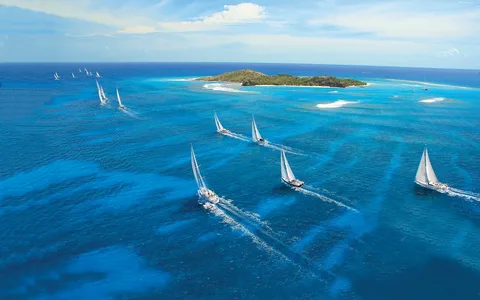Yachting is never a one-size-fits-all experience. The ocean you’re in shapes everything the weather, the water, the distance between ports, and even the type of vessel that works best. Beyond just the view from the deck, factors like seasonal wind patterns, ocean currents, and harbor infrastructure can significantly change your itinerary and onboard experience. Whether you’re planning a short coastal cruise or an ambitious transoceanic voyage, understanding the nuances of each ocean will help you plan better and travel safer.
Different oceans bring their own set of advantages, challenges, and operational demands. From the relatively sheltered waters of the Mediterranean to the vast, unpredictable stretches of the Pacific, yacht captains and owners must account for not just the beauty of the destination but the technical realities of getting there. Fuel range, crew expertise, weather windows, and emergency procedures all shift depending on where you’re navigating. This guide takes a closer look at the major oceans and how their characteristics influence yacht travel.
Mediterranean Sea: Short Distances and Predictable Summer Weather
- Sea Conditions: Generally calm from late spring to early autumn, with low tidal ranges. Strong winds like the mistral (northwest Mediterranean) and meltemi (Aegean Sea) can occur, requiring itinerary flexibility.
- Navigation: Short distances between destinations allow for flexible, multi-stop itineraries. Many marinas are well-equipped, offering full-service facilities that make maintenance and resupply simple.
- Cultural Access: The coastline is dotted with culturally significant cities and towns, offering opportunities for historical sightseeing alongside leisure cruising.
- Environmental Factors: The Mediterranean is a closed sea, meaning pollution control is strict. Waste disposal rules are heavily enforced.
- Best Time to Go: May through September, with June and September providing a balance between good weather and manageable marina traffic (source: https://yachtandboatrental-croatia.com/
The Mediterranean is a region where logistics are straightforward, allowing for itineraries that mix frequent port visits with time at anchor in calm bays. Planning here focuses more on avoiding peak crowds than on tackling extreme weather.
Caribbean Sea: Island Chains and Steady Trade Winds
- Sea Conditions: Steady easterly trade winds provide reliable sailing conditions. Seas can become rough in open passages, but protected anchorages are plentiful.
- Navigation: The Caribbean’s island geography supports both day sails and longer hops. Shallow banks in the Bahamas require careful depth monitoring.
- Port Infrastructure: Most popular islands have modern marinas, but outer islands may have limited facilities, requiring self-sufficiency.
- Cultural Access: Each island offers distinct traditions, cuisines, and music, reflecting a blend of African, European, and indigenous influences.
- Best Time to Go: December to April for dry weather and minimal hurricane risk. June to November is hurricane season.
Here, yachting often revolves around island-hopping, with routes that combine open-water passages and sheltered bays. Weather predictability in high season makes it accessible even to less experienced crews.
Pacific Ocean: Large Distances and Diverse Climates
- Sea Conditions: The largest and deepest ocean, the Pacific offers conditions ranging from flat tropical lagoons to large, long-period swells. Cyclone and typhoon seasons vary by region.
- Navigation: Long passages require yachts to be fully autonomous with fuel, watermakers, and spares. Crew endurance and offshore experience are critical.
- Port Infrastructure: Many remote islands have limited or no marinas, requiring anchoring offshore. Entry formalities can be strict in certain Pacific nations.
- Cultural Access: From Polynesian traditions to New Zealand’s maritime culture, the Pacific is rich in indigenous and modern seafaring history.
- Best Time to Go: South Pacific best from May to October; Alaska and northern Pacific best from June to August.
Yachting in the Pacific is defined by remoteness. Captains must prepare for long legs between ports, sometimes spanning thousands of miles, with little to no access to repair facilities along the way.
Indian Ocean: Seasonal Monsoons and Remote Destinations
- Sea Conditions: Seasonal monsoon patterns dominate. The northeast monsoon (December to March) affects the northern Indian Ocean, while the southwest monsoon (June to September) affects the southern portion.
- Navigation: Charts may be less accurate in remote locations. Fuel stops can be far apart, and reef navigation is common.
- Port Infrastructure: Developed marinas in locations like the Maldives contrast with more basic facilities in other areas.
- Security Considerations: Certain regions, especially near the Horn of Africa, require heightened security awareness due to piracy risks.
- Best Time to Go: May to October for the western Indian Ocean, avoiding monsoon extremes.
Travel here requires a sharp focus on timing, as monsoons can dictate safe travel windows. Routes often need to be adapted to avoid both seasonal storms and politically unstable areas.
Atlantic Ocean: Transoceanic Routes and Varied Coastal Conditions
- Sea Conditions: Can range from calm coastal waters to heavy ocean swells. Winter storms in the North Atlantic can be severe.
- Navigation: Crossing the Atlantic requires precise weather routing and a seaworthy vessel. Coastal cruising varies widely — the Baltic is sheltered, while the open coasts of Portugal and West Africa are exposed.
- Port Infrastructure: Well-developed ports in Europe and North America; mixed infrastructure in parts of West Africa and South America.
- Cultural Access: Offers a huge variety of cultural experiences, from Scandinavian coastal towns to Caribbean island communities.
- Best Time to Go: Late spring and early autumn for crossings; December to April for tropical cruising.https://travelstipsguide.com/
The Atlantic is a testing ground for ocean-crossing skills, but it also offers diverse regional cruising grounds. Preparation is key, especially for passages that cross open ocean with no immediate port access.
Key Takeaway
Each ocean presents its own set of navigational realities, cultural encounters, and operational requirements for yacht owners and captains. Planning a voyage involves more than just picking destinations — it means aligning routes with optimal weather windows, ensuring the vessel is equipped for the expected conditions, and preparing for emergencies specific to the region. The differences between oceans are significant enough to affect vessel choice, provisioning strategy, and even the skills needed on board.

